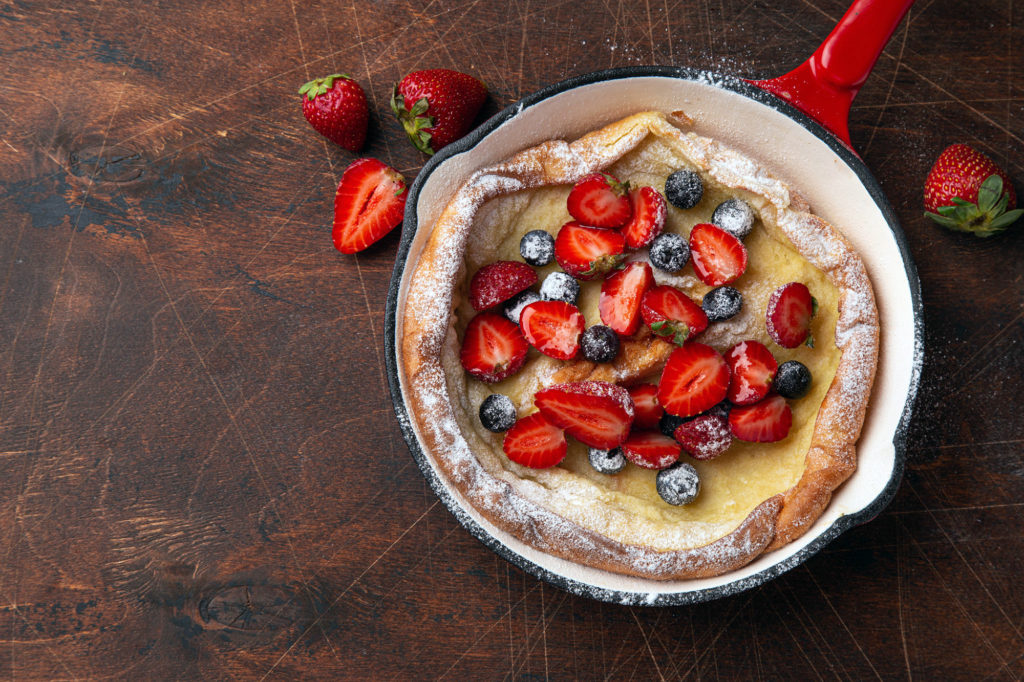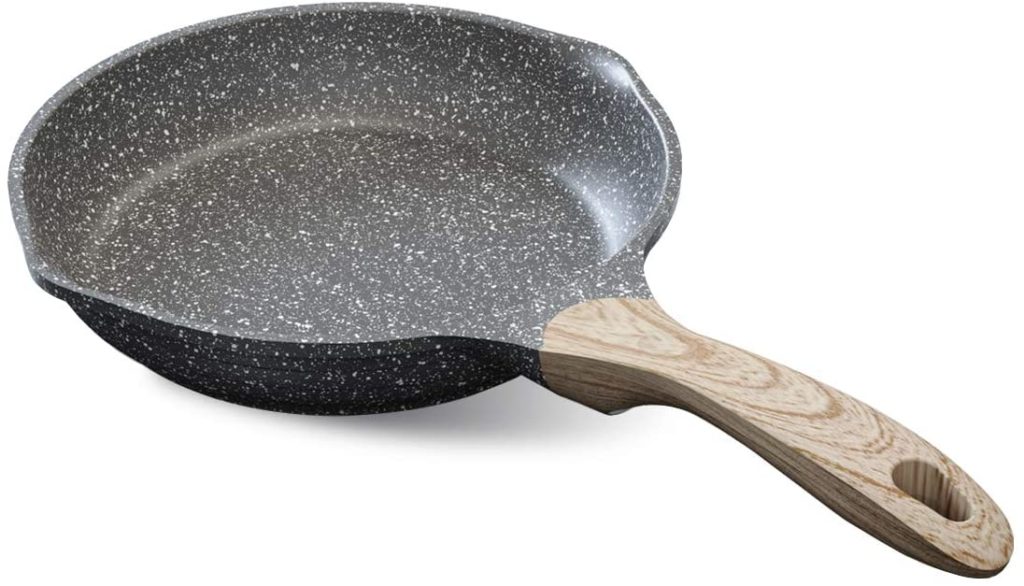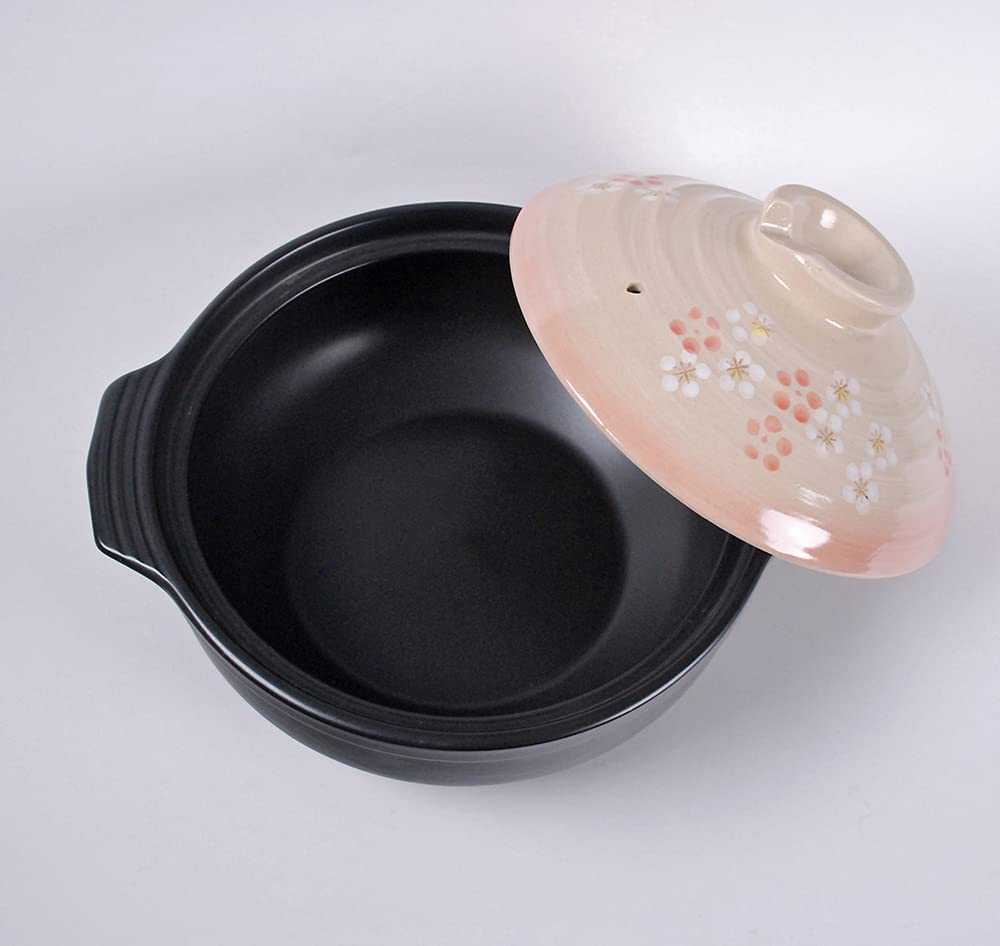I recently learned the hard way just how complicated and confusing the world of stone cookware is. Something as simple as stone cookware pros and cons turned out to be far from simple. From stoneware pots and pans, to bakeware, to stone derived coatings, to ceramic… the list goes on and on.
What should have been just a simple Google search turned into a torrent of conflicting marketing terms, drastically different products, and pots and pans made of everything from non-stick aluminum to ceramic.

All I was trying to do was find better options for healthy cooking with safer cookware and maybe some charming alternatives to my rather sterile looking armada of stainless steel cookware! Instead, I got myself stuck in a marketing and unclear labeling rabbit hole.
This made it very difficult to nail down the pros and cons of stone cookware, or stoneware, in general.
But that being said, I’m still going to give you a quick rundown of what stone cookware refers to in general, what the best stoneware products are, and what the real pros and cons of high quality stone cookware are.
First off, What’s the Best Stone Cookware for Your Home Kitchen?
To avoid risking the possibility of drowning out the actual best choices for home stone cookware by flooding you with the nitty gritty (and maybe boring) technical marketing details, I’m just going to cut to the chase right here.
Here’s my top 5 Best Stone Cookware options and where to get them.
Some of these choices may seem obvious, some less so. Some you may have not been previously aware of as being stoneware. In any case, it’s what isn’t on the list that is most instructive.
If it’s not on this list, but bills itself as stone cookware, best stay away lest you get something that performs poorly or doesn’t even live up to its promises as being true stoneware.
What’s Not On This List, and Why?
If you’ve already tried to dive into the world of stone cookware and bakeware, you may have noticed some products missing on this list.
In fact, the products missing here are oftentimes the ones that come up first when you search for stoneware online.

These products have something like a granite coating but they are not the real deal.
While they may look like stoneware because they have the visual aesthetic of granite or speckled stone, they barely have anything to do with real stoneware.
These stone frying pans, sometimes called “stone-coated,” and ceramic coated aluminum alloy pans are often just regular old pans coated in nonstick coatings. This means that they are rarely PFTE or PFOA free and frequently contain harmful chemicals.
They also aren’t scratch resistant (as much as their marketing reps would like you to believe), can’t tolerate high heat well, and generally just not what they pretend to be.
And as you may or may not know, Teflon® is a brand name for PTFE!
Some products pretend to be true stoneware, and even have the appearance of stone materials, but upon closer inspection of its description, the pan just turns out to be aluminum with a “stone-derived coating.”
This is par for the course in the stoneware marketing world, unfortunately. They give the pots and pans the look of marble stone and then basically just call it a day.
Any time you see a product that presents itself as ceramic cookware, or as stone pans, sometimes granite pans, or any of those so-called natural stone pots and pans, be very wary. These are almost always nothing more than nonstick cookware sets dressed up with stone flakes in their nonstick coatings at best, and at worst just regular old nonstick coated cookware with the look of natural stone.
Stay away from these pots and pans. They’re really not much more than just coated pans that are made of your standard suspects in cookware materials (like aluminum or steel) that are either ceramic coated or even just standard PTFE nonstick coated.
Instead, just get a regular aluminum pan that will offer the same performance, lower risk of toxic chemicals, and all for a much lower price.
The REAL Pros and Cons of Stone Cookware
Now that we have focused our search a bit, and left out the imposters, let’s get to the true pros and cons.
For all stoneware, whether it’s ceramic, porcelain, enamel, Pyrex, or even stunning and closely related Japanese Earthenware Donabe, the pros and cons are mostly the same.

The best parts about true stoneware as a rule is that it is quite durable, non-porous, non-toxic, easy to clean, dishwasher safe, and in general at least semi-nonstick naturally. This is because stoneware is usually made of very impermeable materials that make it stay food safe for a very, very long time.
The same hard non-porous and impermeable materials that stone cookware is made of also makes them very scratch resistant. There’s no problem with using metal utensils on true stone cookware.
The cons are also much the same across the board. It’s heavy, tends to be rather brittle (Don’t drop it. Not that you ever would, of course), and heats rather unevenly.
Stoneware in general tends to have poor and uneven heating properties. This is the main reason why you generally see true stoneware nearly exclusively sold as bakeware. This is your other hint to stay away from pans and skillets that present themselves as stone cookware.
All in all, the lesson should be clear. Just because it looks like granite or stone, doesn’t mean it is, especially when it comes to stone cookware that’s meant for stovetop use. Stick to the recognized brands and names in stone cookware and bakeware to get wonderful, solid, and long lasting bakeware at home.Stone cookware pros and cons
